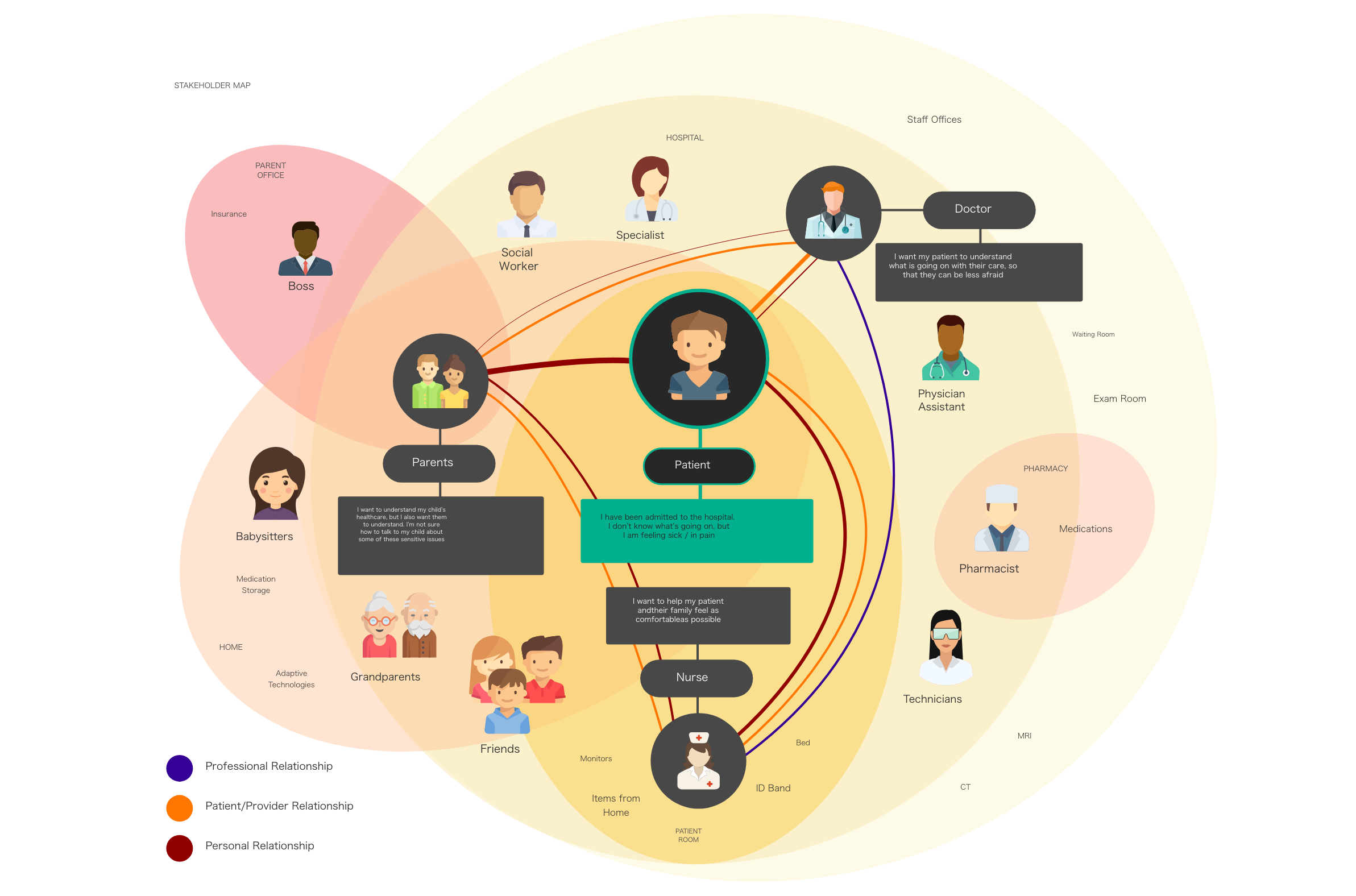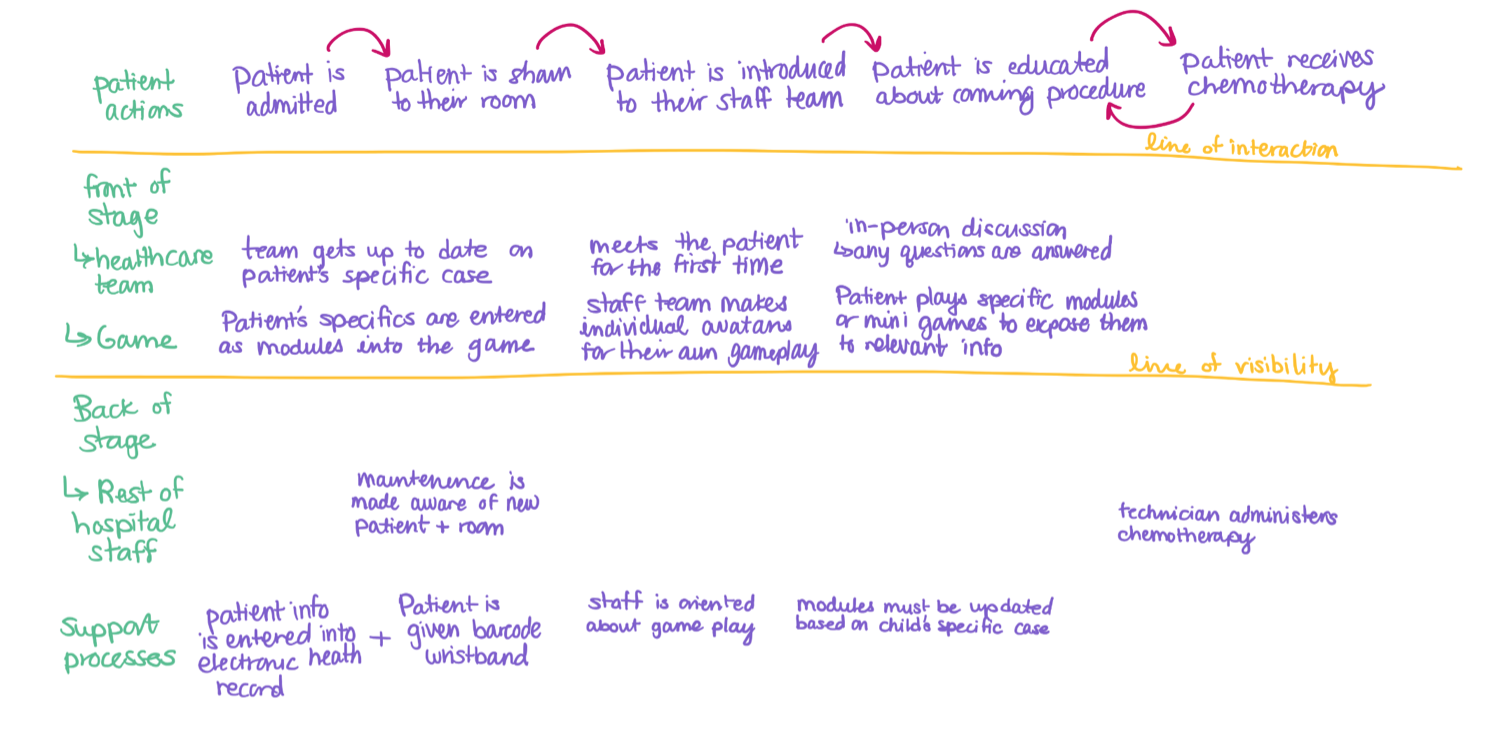

What
User Research
Service Design
Independent Work
Presenting
Honors in the College of Arts, Media, and Design
When: January - May 2018 | Where: Northeastern University, Boston, MA
Why
This is the research project I undertook to complete my honors in the College of Arts, Media, and Design at Northeastern. It is an exploration into pediatric patient experience in long term care and a proposed game solution that familiarizes children with their care in a comfortable and engaging way.
How
I came into this project knowing I wanted to work on something related to pediatrics and hospitals, but wasn't exactly sure what aspect I wanted to tackle, so I began with academic research about pediatric hospital stays.
I chose pediatric Leukemia in part due to it's prevalence, and in part because the high survival rate means patients will likely remember their hospital experience.

The stakeholder map highlighted the players in the patient's orbit and also the frequency of their interactions.
I used experience mapping to visually represent and understand the different touch points of the patient's treatment journey.

The diagnosis phase involves heightened anxiety, but mostly takes place with the family and at home.

The treatment phase involves the bulk of the medical intervention and the prolonged hospital stay.

The maintenance phase involves intermittent returns to the hospital for shorter in-patient stays.
Through brainstorming, I concluded that the best solution was a game that teaches pediatric patients about their care in a way that is understandable, accessible, and fun for them, by speaking to them in language and metaphors they can understand.
The child has an avatar. Care providers may have custom avatars
Teacher facilitates an activity that is then reflected in the game
Game features are activated based on events in the hospital
The game can be tailored to child’s daily energy level and their treatment plan
Using a service blueprint, I considered where the user would interact and what the implications behind the scenes would be at every step.


This project was interesting in that I was able to determine from zero what I wanted to work on and I learned a lot about doing quality UX research and about not beginning to design until research has been fully analyzed. Some of the challenges I encountered included how to encourage playing the game (as opposed to iPhone games or xBox), how to best integrate with the child's classroom, how to configure the game for different situations (prognosis, religious background, etc.).
Miro • Adobe Illustrator • iPad (OneNote sketches)